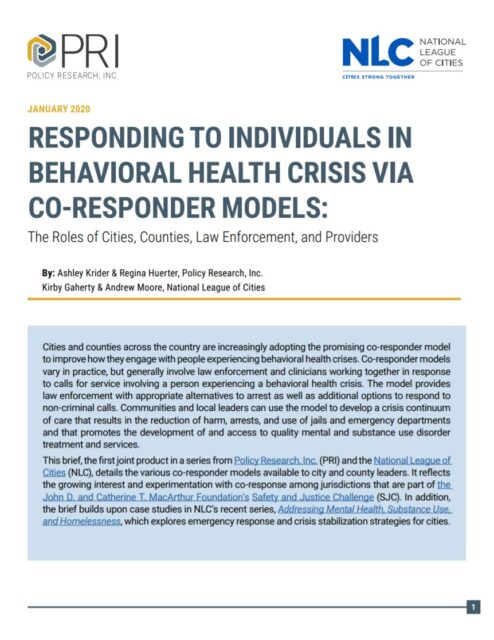Cities and counties across the country are increasingly adopting the promising co-responder model to improve how they engage with people experiencing behavioral health crises. Co-responder models vary in practice, but generally involve law enforcement and clinicians working together in response to call for service involving a person experiencing a behavioral health crisis. The model provides law enforcement with appropriate alternatives to arrest as well as additional options to respond to non-criminal calls. Communities and local leaders can use the model to develop a crisis continuum of care that results in the reduction of harm, arrests, and use of jails and emergency departments and that promotes the development of and access to quality mental and substance use disorder treatment and services.
This brief, the first joint product in a series from Policy Research, Inc. and the National League of Cities, details the various co-responder models available to city and county leaders. It reflects the growing interest and experimentation with co-response among jurisdictions that are part of the John D. and Catherine T. MacArthur Foundation’s Safety and Justice Challenge. The brief also builds upon case students in NLC’s series, Addressing Mental Health, Substance Use, and Homelessness, which explores emergency response and crisis stabilization strategies for cities.

